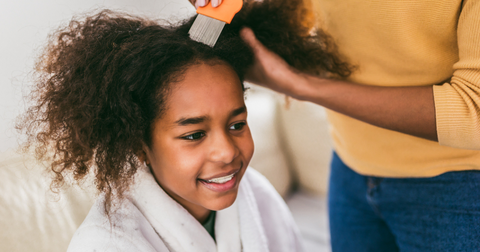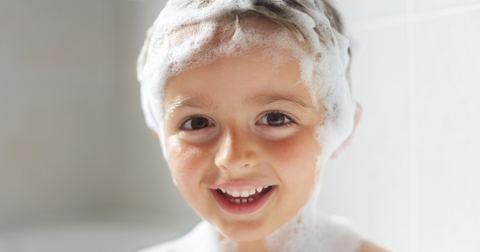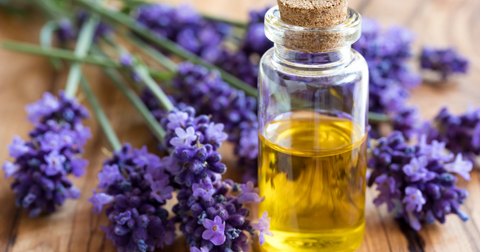No one likes the itchiness, discomfort, and distress that comes with a lice infestation. Often, the first instinct is to rush to the pharmacy for the most potent chemical shampoo available.
However, as our understanding of the potential side effects associated with chemical treatments grows, many are turning to natural remedies as a safer alternative.
Natural lice treatments, while gentler on the scalp and environment, require a thorough understanding of their application and timeline to ensure effectiveness.
Why Prompt Treatment Is Crucial
Lice reproduce quickly. A female louse can lay up to 6-10 eggs a day, meaning that a small infestation can become a full-blown problem in a very short time. Treating head lice promptly not only eases discomfort and itching but also significantly reduces the chances of them spreading to others in close proximity, such as family members, classmates, or coworkers.
Potential Risks of Delayed Treatment
- Increased itching and discomfort: As the number of lice grows, so does the itching. This is due to the increased number of lice bites and the body's reaction to their saliva.
- Secondary infections: Constant scratching can lead to open sores on the scalp. These sores can become infected if not treated, leading to further complications.
- Spread to others: The longer lice are left untreated, the greater the risk they pose to those around you. This can lead to a cycle of re-infestation.
- Psychological stress: Especially for children, having lice can be a distressing experience. It can lead to feelings of embarrassment, anxiety, and even isolation from peers.
Timelines for Each Natural Treatment
An understanding of how and when to apply natural lice treatments ensures optimal efficacy. Let's explore the timelines for each head lice treatment to ensure you get the best results.

- Initial combing session: Dedicate at least an hour for the first thorough comb-through, ensuring all sections of the hair are meticulously addressed.
- Frequency of follow-up combing: Every 2-3 days for at least two weeks to ensure newly hatched nymphs are captured before they mature and lay eggs.
- Expected duration for full treatment: 14-21 days, with regular checks for a month to ensure complete eradication.
Essential Oils
- Initial application: Apply the diluted essential oil mixture, such as our Nit-Zapping Clenz Cream, and leave it on for at least an hour or overnight, if possible.
- How often to apply: Every other day for the first week.
- Duration until results are seen: Most live lice should be eradicated within the first few applications. However, continue the treatment for at least 10-14 days to ensure newly hatched lice are also addressed.
Oils (Olive, Coconut, etc.)
- Initial application: Apply a generous amount of oil, ensuring full scalp and hair coverage. Leave on for several hours or ideally overnight.
- Application frequency: Every 2-3 days for a week.
- Time frame for results: Similar to essential oils, the majority of live lice should be gone after the first few applications. Continue treatment for 10-14 days to ensure all lice, including new hatchlings, are eradicated.
Herbal Remedies and Shampoos
- Suggested usage frequency: Depending on the product, such as our Nit-Zapping Clenz Shampoo, some might recommend daily usage, while others might be used every 2-3 days.
- Expected timeline for results: Generally, after a week of consistent application, a noticeable reduction in lice should be observed. However, always refer to product guidelines and continue treatment as suggested, usually for about 2 weeks.
Factors Affecting Treatment Timelines
While the previously mentioned natural treatments come with their general guidelines and timelines, it's essential to understand that the effectiveness can vary based on several factors. Recognizing these variables will not only help set realistic expectations but also allow for adjustments as needed.
Severity of Infestation
The number of lice and (lice eggs) nits present on the scalp can influence the duration and frequency of treatments. A heavier infestation might require more extended and more frequent treatment sessions. If the infestation is severe, initial treatments may only reduce the population rather than eliminate it. Subsequent treatments become crucial in such cases.
Hair Length and Type
Lice treatments can be more challenging for longer and thicker hair because of the increased surface area and hiding spots available to lice and nits. Curly or coiled hair may pose additional challenges for combing. Longer or denser hair might require prolonged treatment durations or even more sessions. Adaptation in combing techniques might be necessary for specific hair types.
Consistency and Diligence
The effectiveness of natural treatments often hinges on how consistently and meticulously they're applied. Missing even a single mature louse can lead to a resurgence. Adhering strictly to the recommended treatment intervals and ensuring thorough application can make a significant difference in outcomes.
FAQs About Natural Lice Treatment Timelines
Your questions matter! Here's a curated list of frequently asked questions regarding natural lice treatment timelines, answered for clarity and effectiveness.
How often should I repeat a natural lice treatment for optimal results?
The frequency largely depends on the chosen treatment and the severity of the infestation. For most treatments, repeating every 3-4 days for 2-3 weeks is recommended. This ensures you target lice that might hatch after the initial treatment.
I've been consistent with the treatment, but lice are still present. Why?
Lice can be tenacious. Their life cycle means that eggs (nits) might not be affected by the initial treatments and can hatch later. Ensure you're combing out nits effectively. If problems persist, consider combining treatments or seeking professional advice.
Can I use multiple natural treatments simultaneously?
While many natural treatments can be combined for better efficacy, it's crucial to ensure they don't cause scalp irritation when used together. Always conduct a patch test before full application and space out treatments if irritation occurs.
Why is it recommended to continue treatment even after not spotting any lice?
While you might not see mature lice, unhatched nits could still be present. Continuing treatment ensures that you target any newly hatched lice before they mature and reproduce.
How long after starting a natural treatment will I be lice-free?
With consistent and thorough treatment, most individuals see significant reduction or elimination of lice within 2-3 weeks. However, factors like the severity of the infestation and the chosen treatment can influence this timeline.
Are natural treatments safe for all age groups?
Most natural treatments are safe for all ages, especially when compared to chemical alternatives. However, always ensure you're using diluted essential oils and conduct patch tests to prevent allergic reactions, especially in children.
How can I prevent future lice infestations after successful treatment?
Regular scalp checks, maintaining hair hygiene, using natural repellents like tea tree or lavender oil spritzes, and educating family members about not sharing personal items can significantly reduce the chances of a future infestation.
Healing with Nature’s Touch

Tackling lice can be challenging, but armed with the right knowledge and a systematic approach, it's manageable. While natural remedies offer a gentler alternative, it's essential to apply them effectively. If they don't yield results, don't hesitate to explore other solutions or seek professional advice. Ultimately, the goal is a lice-free life achieved safely and efficiently.




Comments (0)
There are no comments for this article. Be the first one to leave a message!